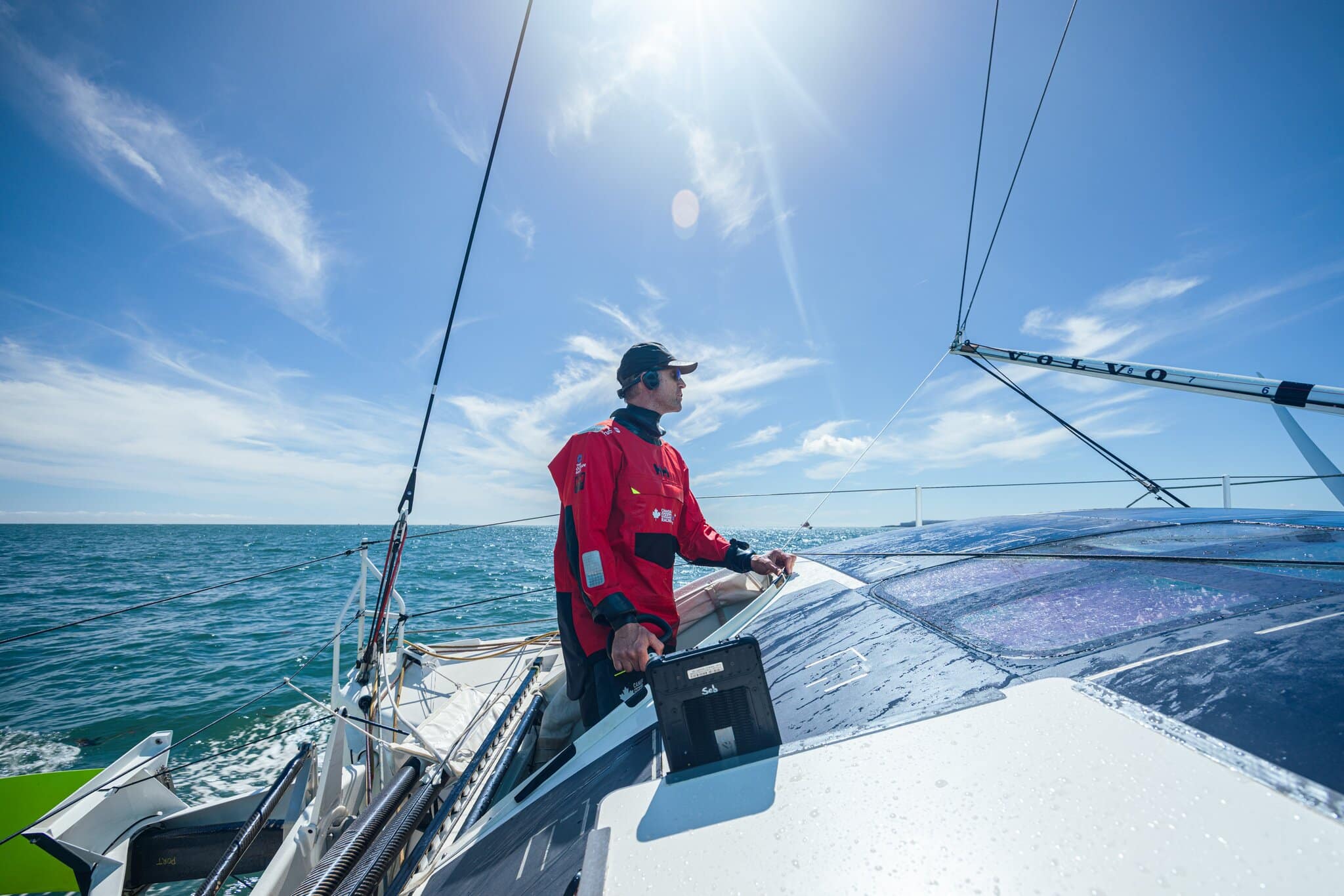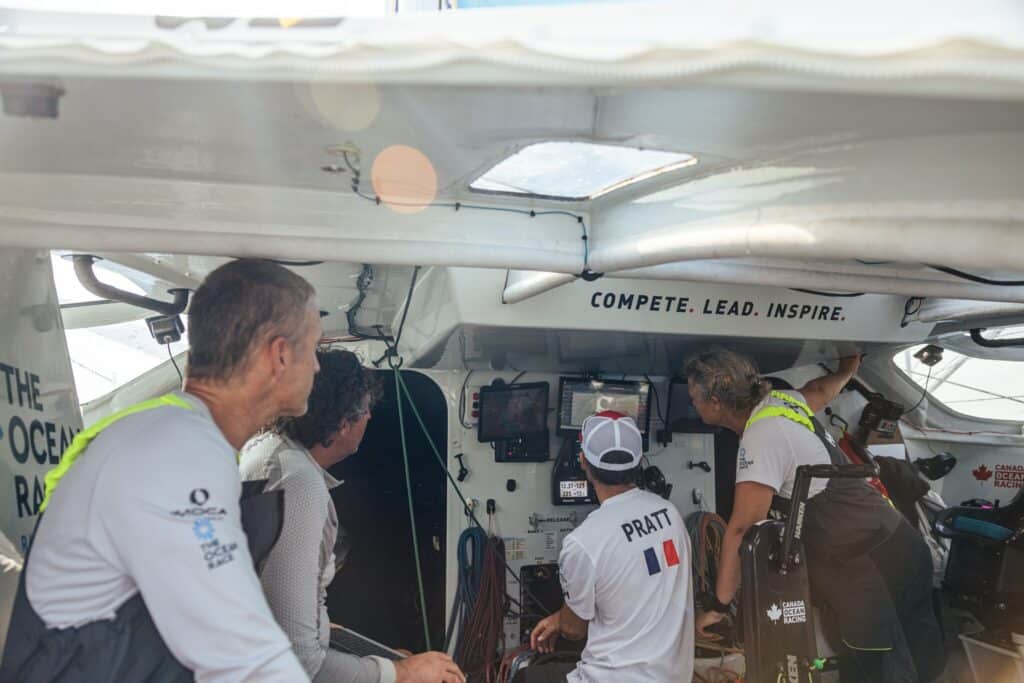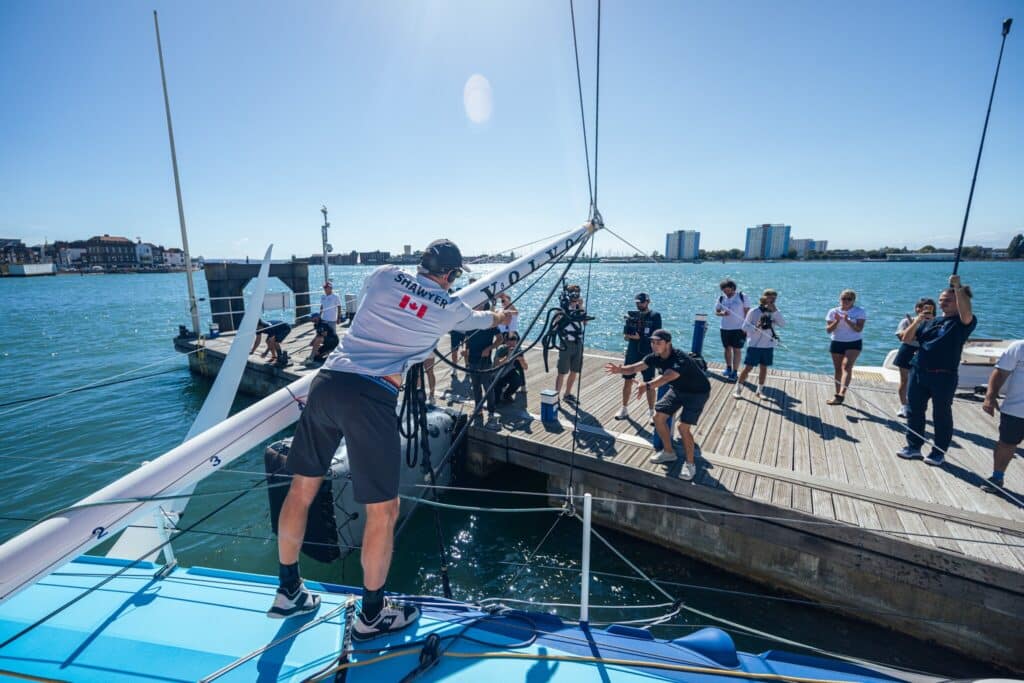
15 Aug Learning by Doing: Scott Shawyer Reflects on Leg One of The Ocean Race Europe
As Leg One wraps up, here’s how Scott is fast-tracking his IMOCA skills.
At times, the spray was flying, the pace relentless, and at other times, the water was glassy and the air was breathless. For Scott Shawyer, president and skipper of Canada Ocean Racing – Be Water Positive, Leg One of The Ocean Race Europe was about far more than the result sheet. The team crossed the line in a solid 4th place, yet the real win was his acceleration of a steep learning curve on his new foiling IMOCA. With the Vendée Globe 2028 as his ultimate target, every mile racing and training between now and then is a step toward that challenge.
“We bought the boat earlier this year and after a short training window with Brian Thompson, Pip Hare, Sébastien Marsset and Chris Pratt, we’re here in Portsmouth, England at The Ocean Race Europe having just completed Leg One. Looking ahead, the next big step is to race it in solo events next season, starting with the Vendée Arctique,” Scott explains.
“Between now and then, I’m facing a huge learning curve, so this race is the perfect opportunity to get experienced people around me who know these boats inside out. It’s a ‘no excuses’ race environment that forces me to learn quickly. We’ll add more training later this year and into next year, so I’m fully prepared for the solo races ahead.”
While the competitive element is key, Scott admits the race serves several purposes. “It’s important from a training perspective, but also for raising our profile as a team. On a performance level, a communications level, and a sponsorship level, it all matters. And on top of that, it’s just a fun race – a really enjoyable part of this bigger adventure.”
A revelation at sea
Leg One also gave Scott an unexpected personal insight: “I learned that I absorb information best by doing, not by being told, which was a bit of a revelation for me. I tend to question things and won’t take them at face value unless they resonate with me.”
If the task is straightforward, like starting the engine, Scott is happy to follow instructions. But when it comes to something more nuanced, like adjusting sail trim, he needs to see the effect for himself. “If I can’t see the boat speed increase, I don’t fully take it in. I like to run my own trials, look at the data, and confirm it. That might sometimes look like I don’t trust my teammates, but it’s just my learning style.”
Recognising that pattern has been important. “Now I can explain it to the people around me so we can work together better. It’s not that I doubt them, I just learn best through experience.”
Learning styles and patience
Scott says the team has been generous with their knowledge. “Everyone’s open and willing to share. The only challenge is that I can be a bit ‘prove it to me.’ If something doesn’t fit my current mental model, I have to try it myself. That takes a bit of patience from the team.”
He likens it to approaching a door with a ‘push’ sign and being told to pull it. “I’ll stay open-minded – perhaps it does need pulling – but I’m going to push first and see for myself. On the boat, there are moments like that where someone will say ‘do it this way,’ and if it doesn’t make sense to me yet, I’ll want to test it. Sometimes it doesn’t make sense because I don’t have all the knowledge yet, but testing it helps me understand.”
Shared goals
Despite differences in approach, Scott says the team is united. “We’re all aligned on the big objectives — learn the boat, make it go fast, sail well, and give our best in The Ocean Race Europe. We all want the same thing, and we’ve all got the team’s best interests at heart.”
For Scott, this leg has been as much about self-discovery as sailing. The miles ahead will bring more lessons, both in boat speed and in how he learns, but the direction is clear: toward a solo Vendée Globe campaign, built on a foundation of hands-on experience.
|
|


Arriving into Portsmouth.
[/vc_column_text][/vc_column][/vc_row]
